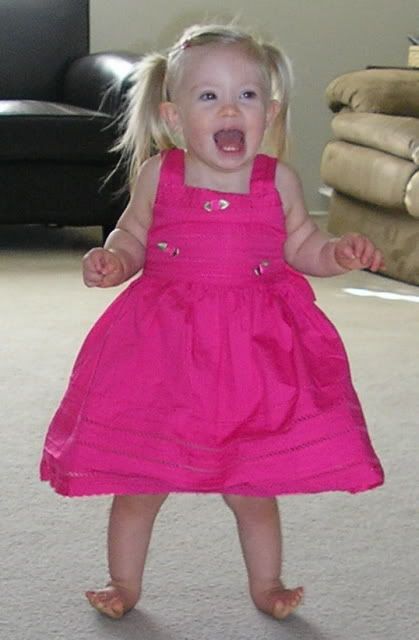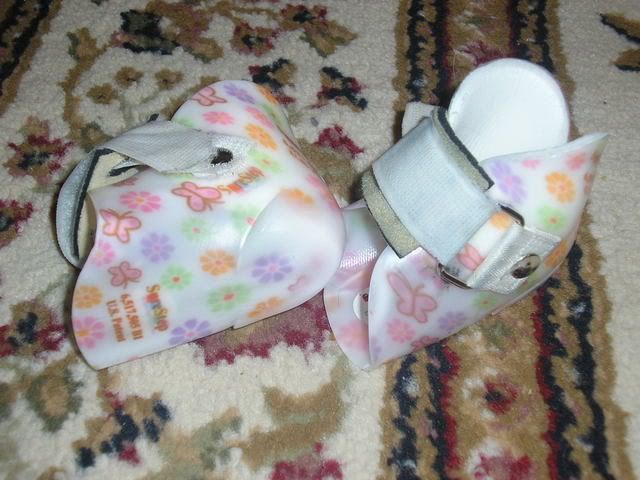
Two early reading programs for your kids
I am an avid researcher when it comes to educating my children-especially my daughter who has Down syndrome. I want to give my daughter every head start she can get because a lot of milestones take her a little longer to achieve. I am fortunate to have attended two reading program workshops designed for children with Down syndrome. Both of these programs are whole language programs and are not phonetic programs. I found this site which explains the difference between phonetic reading programs and whole language reading programs. I think that a comprehensive approach is the best way to teach reading.
While these programs are designed for children with Down syndrome, I truly believe they can be used with any child of any learning ability. I feel that half the battle of teaching our child anything is finding some sort of direction. These programs do just that-provide guidance and direction for parents as they teach their children the very important skill of reading.
The first program I have learned about is called See-and-Learn. This program was developed by Frank Buckley in the United Kingdom by the Down Syndrome Educational Trust. Through much research, they have designed a reading program for very young children. This program is not a phonetic program and does not focus on shapes or sounds of individual letters. It is a sight-word based program and focuses on the shapes of entire words.
The reading program is divided into several steps:
- My First Words
- My First Reading
- My First Sentences
Each of these steps follow the same pattern:
- Let’s Look at the pictures or words
- Let’s Match the pictures or words
- Let’s Show we understand
- Let’s Say or Sign
See-and-Learn is a very well researched reading program and I love that they specialize in teaching children with Down syndrome how to read. The program is still being developed, however you can get started today! All of their pilot materials are online available for FREE download, as is the power point slides from the conference I attended. You can print activity guides, session records, and step guides at their website. This program is being developed in the United Kingdom, so some of the words may not be appropriate (ie: “biscuit” instead of “cracker.”) The Down Syndrome Educational Trust is working with a group in the United States to make the vocabulary more American friendly. Please check out their site and check out the pilot materials! I am hopeful that the program will be completed very soon and that I can start getting the full resources soon for Darah, however I have been able to use their program by making some modifications and have been happy to have the direction and motivation this program has given me.
The second program I attended a workshop on was the Out of the Box reading program. This was one of the funnest workshops I have ever attended. The presenters (and creators) have incredible energy and enthusiasm about their program. Out of the Box reading program is also a whole language approach to teaching your child to read. This program emphasizes repetition. It is also geared toward children who have Down syndrome, but again, any child could benefit from this program. Basically, through HUGE flashcards, and consistent repetition, Out of the Box strives to teach very young children to read. My only con with this program is the cost. It is pretty expensive, however, all of the friends I have who have purchased this program have sworn by it and are seeing results. Here is a video of how this program works:
What are your thoughts on these programs?
Share the fun: Email + Del.icio.us + Digg + Technorati

 Darah’s
Darah’s  The plastic covers the bottom of her foot (stopping right before her toes) and covers the backs and sides of her lower ankles. When she wears converse style tennis shoes, they are completely hidden. Darah walks so much better when she is wearing them. She has to wear socks under them at all times, and cannot wear them without shoes over them (because they are slippy), so the con to orthotics is the sweaty feet they produce during the summer time. She wears them whenever she leaves the house. I let her have barefoot play at home. She will not necessarily wear these for forever, however she may need some sort of shoe insert or arch support for the rest of her life due to the severity of her pronation. This equipment is covered by our insurance. They also come in very fun patterns!
The plastic covers the bottom of her foot (stopping right before her toes) and covers the backs and sides of her lower ankles. When she wears converse style tennis shoes, they are completely hidden. Darah walks so much better when she is wearing them. She has to wear socks under them at all times, and cannot wear them without shoes over them (because they are slippy), so the con to orthotics is the sweaty feet they produce during the summer time. She wears them whenever she leaves the house. I let her have barefoot play at home. She will not necessarily wear these for forever, however she may need some sort of shoe insert or arch support for the rest of her life due to the severity of her pronation. This equipment is covered by our insurance. They also come in very fun patterns! As the mother of two children with congenital heart defects, I pay extra close attention to changes with the
As the mother of two children with congenital heart defects, I pay extra close attention to changes with the 

 Some of the first books we loved are by
Some of the first books we loved are by  We have recently discovered the tales of
We have recently discovered the tales of  Dinosaurumpus!
Dinosaurumpus!




